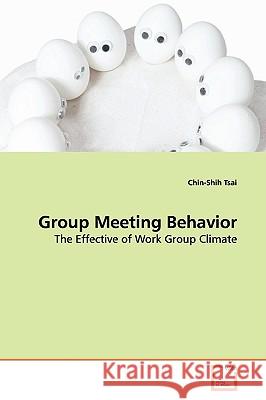Group Meeting Behavior » książka
Group Meeting Behavior
ISBN-13: 9783639143423 / Angielski / Miękka / 2009 / 176 str.
Nowadays, the dynamic work environment has driven organizations to manage in a more innovative way. Organizations should apply their teamwork to achieve change. The need to adapt has led to qualitative and quantitative development of efficient and effective work group climates for innovation (West, 1990). The process of group change requires a lot of routine and non-routine meetings for information sharing, problem solving, and decision making. This book presents the results of study investigating relationships between work group climates and meeting behaviors, as perceived by group members. Via models designed and numerous testing, the results, in summary, indicated that: (1) work group climate is positively related to work group meeting behavior, (2) sub-system climate exists in a large organization, and (3) different work group meeting behaviors exist in a large organization. The present study might lay a foundation for future related research along these lines.
Nowadays, the dynamic work environment has driven organizations to manage in a more innovative way. Organizations should apply their teamwork to achieve change. The need to adapt has led to qualitative and quantitative development of efficient and effective work group climates for innovation (West, 1990). The process of group change requires a lot of routine and non-routine meetings for information sharing, problem solving, and decision making. This book presents the results of study investigating relationships between work group climates and meeting behaviors, as perceived by group members. Via models designed and numerous testing, the results, in summary, indicated that: (1) work group climate is positively related to work group meeting behavior, (2) sub-system climate exists in a large organization, and (3) different work group meeting behaviors exist in a large organization. The present study might lay a foundation for future related research along these lines.











